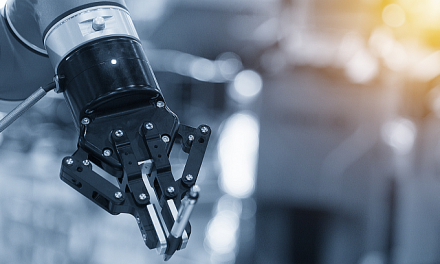Engineering Tomorrow, Today: An Interview with Irene Sterian, Director, Technology and Innovation Development at Celestica

This post is part of Celestica’s Engineering Series, and was originally posted on their blog
Original equipment manufacturers (OEMs) worldwide face the common challenge of sustaining their innovation efforts as the cost of developing new silicon chipsets keeps rising. For this installment of our Engineering Series, we turn to Irene Sterian, P. Eng., Technology Business Partner at Celestica who believes advancements in fields like microelectronics and ruggedization are making it possible for OEMs to overcome that challenge and drive next-generation product design and innovation to meet the demand for products that integrate hardware, software and artificial intelligence (AI).
What is your role and the role of the broader engineering team at Celestica?
Along with a global team of engineers, we help our customers turn their engineering teams’ designs into new and innovative products for a wide range of industrial and consumer applications. In many cases, these new products are smaller, faster, and more powerful than previous generations, and are often immune to the harshest weather conditions, extremes of temperature or pressure, or even fire. But if the cost to manufacture and deliver those products rises too high, the new product designs will never get off the drawing board.
Fortunately, we have developed deep expertise in how to leverage the remarkable advancements in microelectronics packaging technologies and techniques, including ruggedization, combining optics and electronics, and processing faster signal speeds, to enable OEMs to continue innovating while keeping production and delivery costs in-line.
What are some of the recent advancements in the field of microelectronics that you find especially exciting?
We stand at the dawn of a new Industrial Revolution marked by the convergence of smart manufacturing processes, AI, and the electronification of products. It’s now possible to do things with electronics packaging that were once thought impossible, such as stacking multiple chips on top of one another and adding a memory chip right onto the processor chip. Chip manufacturers have managed to combine several small “chiplets” that work together to perform just like one bigger (and much more expensive) chip.
Miniaturizing chipsets is only one of several microelectronics challenges OEMs face. Another is shrinking the size of sensors while still improving performance and durability. That requires an expertise in manufacturing optics and electronics. To understand why, consider the difference between optics and electronics. Electronics are circuit boards with components – they usually melt at 200 degrees Celsius. But optics don’t have temperature limitations because they’re made of glass – they can resist heat as high as 1,000 degrees Celsius.
This new Industrial Revolution will be based in the understanding of how to incorporate optics and electronics into product designs to ensure the sensors are powerful and rugged enough to operate for years, even decades, including outside in the elements. For example, a large percentage of sensors deployed throughout a smart city infrastructure are located outdoors, and must be immune to damage from rain, salt, hail, exhaust, snow, and wind.
How significant are these developments in microelectronics and electronics packaging to Celestica and our customers?
It’s not an understatement to say this marks a sea change in what OEMs prioritize during the product design and manufacturing processes.
Historically, integrated circuits (IC) packaging has taken a backseat in the semiconductor industry. The package was simply there to house a chip at the lowest possible cost. That is no longer the case.
Artificial intelligence (AI) technologies and software applications have become key product differentiators, and has fueled the rise of the Internet of Things (IoT). Companies are embedding sensors, AI and sophisticated software apps into everyday pieces of hardware, from microwave ovens to automobiles, to create smart devices that generate, analyze and share data with one another over the Internet.
Yet, while manufacturers allocate more of their R&D dollars and resources to developing software and AI, they can’t deliver innovative products without the supporting hardware. That’s where we come in. The field of microelectronics packaging has become so critical to off-setting rising silicon costs.
Are there particular industries that are using this combination of hardware, AI and software to drive innovation better than others?
There isn’t a business or consumer technology sector that is not already benefiting from these advancements. For example, Celestica has worked with Cepton to reduce the size of its Light Detection and Ranging (LiDAR) sensor to enable auto manufacturers to incorporate it into the bodies of their vehicles – completely out-of-sight, yet without sacrificing performance. Devices like Cepton’s sensor are paired with AI systems to enable advanced driver-assistance systems (ADAS) to “see” in real-time what’s happening around the vehicle and take immediate action to make our roads and highways safer. Celestica is the bridge to help connect the silicon brain to the end user. Tomorrow, these systems will serve as the eyes and brains of autonomous cars and trucks.
Smart electronics can also be used to “intense-monitor” buildings. One of our clients has equipped each floor of a 90-story office building with sensors we manufacture that monitor internal and external environmental conditions like heat, vibrations from earthquakes, and typhoon wind strength. In the event of a fire, the sensors track exactly where the flames are located, whether they’re spreading, and how high temperatures are rising. The data is analyzed and shared in real-time with building staff and emergency workers to help them fight the fire with pinpoint accuracy, protect themselves and rescue anyone who may be trapped.
We also work with manufacturers that knit sensors into textiles to create smart clothing that monitors the wearer’s heart rate, body temperature and other vital signs. These sensors collect and transmit data to the user’s smartphone. AI and software applications analyze that data and provide caregivers with real-time insights into the patient’s health, effectiveness of treatments, and medication use. That wealth of information leads to more informed, and more effective, healthcare decisions.
What trends do you expect to have the greatest impact on electronics manufacturers in 2020 and beyond?
Companies that are able to integrate hardware, software and AI will be the success stories of the future. This capability will become critical to any manufacturer in the design of innovative new products.











